
About UsThe Numismatic Bibliomania Society is a non-profit organization promoting numismatic literature. For more information please see our web site at coinbooks.org SubscriptionsThose wishing to become new E-Sylum subscribers (or wishing to Unsubscribe) can go to the following web page link MembershipThere is a membership application available on the web site Membership Application To join, print the application and return it with your check to the address printed on the application. Membership is only $15 to addresses in the U.S., $20 for First Class mail, and $25 elsewhere. For those without web access, write to: David M. Sundman, Secretary/TreasurerNumismatic Bibliomania
Society AsylumFor Asylum mailing address changes and other membership questions, contact David at this email address: dsundman@LittletonCoin.com SubmissionsTo submit items for publication in The E-Sylum, just Reply to this message, or write to the Editor at this address: whomren@coinlibrary.com
BUY THE BOOK BEFORE THE COINYou won't regret it! |
- WAYNE'S WORDS: THE E-SYLUM FEBRUARY 22, 2009
- DAVID SKLOW NUMISMATIC LITERATURE SALE #6 RESULTS
- ADDRESS UPDATE FOR NUMISMATIC LITERATURE DEALER JOHN BURNS
- NEW WEB SITE: NEOCOLLECT.COM
- NEW BOOK: THE WHITMAN ENCYCLOPEDIA OF COLONIAL AND EARLY AMERICAN COINS
- NEW BOOK: CONFEDERATE DEPOSITORY RECEIPTS AND EXCHANGE CERTIFICATES
- NEW BOOK: THE DEVIL'S WORKSHOP: A MEMOIR OF THE NAZI COUNTERFEITING OPERATION
- THREE MORE NUMISMATIC TITLES ADDED TO STELLA WEB SITE
- SURVEY: THE COIN COLLECTOR'S JOURNAL
- MORE ON A GUIDE BOOK OF SOUTHERN STATES CURRENCY BY HUGH SHULL
- QUERY: 1863 $3 AND $4 STATE OF GEORGIA TREASURY NOTES SOUGHT
- QUERY: AN OFTEN-SEEN COIN TONING EFFECT
- ASSAY MEDAL BOOK BOUND BY AUTHOR, NOT TAMS
- MORE ON NUMISMATIC LITERATURE INVENTORY SOFTWARE
- ST. LOUIS COIN DEALER BURDETTE G. JOHNSON
- MINT RECORDS DESTROYED BY STELLA HACKEL, NOT MARY BROOKS
- THE 1992 MYSTERY OF THE COUNTERFEIT CHRYSANTHEMUMS
- STICKERED OBAMA QUARTERS NOT A PRODUCT OF NATIONAL COLLECTOR'S MINT
- QUERY: INFORMATION ON CHARLOTTE MINT BOOK AUTHOR STAUTZENBERGER SOUGHT
- MORE ON THE KANSAS POCKET GOPHER SCRIP NOTE
- MORE ON NEWSPAPER ARCHIVE WEB SITES
- QUERY: DID THE U.S. MINT STRIKE A GOLD MEDAL FOR MAGICIAN HERR ALEXANDER?
- QUERY: SPANISH CIVIL WAR BANKNOTE BOOK SOUGHT
- MORE ON THE DEBATE FOR AND AGAINST NUMISMATIC MUSEUMS
- TRAIN ROBBER SNATCHES SACKS OF NEW 1909 CENTS
- EDITORIAL BACKLASH AGAINST THE U.S. CENT CONTINUES
- HOW COINS, BANKNOTES AND CHEQUES ARE BEING REPLACED BY ELECTRONIC MEDIA
- BANKNOTE PRINTER TO PRINT NEW SOLAR CELLS ON POLYMER
- THAT HUGE SUCKING SOUND IS CASH FROM TOURIST POCKETS
- SHADES OF ALVES REIS: NIGERIAN SCAMMER'S $27 MILLION SWINDLE
- FEATURED WEB SITE: THE GREEK COIN PAGES
WAYNE'S WORDS: THE E-SYLUM FEBRUARY 22, 2009
 Among our recent subscribers is ANS archivist Joe Ciccone, courtesy of David Yoon. Welcome aboard! We now have 1,218 subscribers.
Among our recent subscribers is ANS archivist Joe Ciccone, courtesy of David Yoon. Welcome aboard! We now have 1,218 subscribers. This week we open with updates from numismatic literature dealers David Sklow and John Burns. Next up is an announcement about a very useful web site for collectors who'd like to compile museum-style inventories of their collections.
New books this week cover topics including U.S. Colonial coins, Confederate Depository Receipts, and the WWII Operation Bernhard counterfeiting scheme. Queries cover topics including State of Georgia Treasury Notes, and an interesting toning effect on coins.
We also have several comments and corrections to earlier E-Sylum pieces. (What!? We make mistakes? That must be a mistake...). Also, my apologies to several readers who submitted items for publication this week - the clock ran out before I could manage to get everything in. There just aren't enough hours in the week... I do want to pass on this note from Dave Bowers, though. He writes: 'Tis George Washington's birthday today--the president most honored on tokens, medals, and paper money.
Anyway, to learn about Herr Alexander's medal, the great 1909 cent theft, and how you, too, can scam millions of dollars from Citibank, read on. Have a great week, everyone!
Wayne Homren
Numismatic Bibliomania Society
DAVID SKLOW NUMISMATIC LITERATURE SALE #6 RESULTS
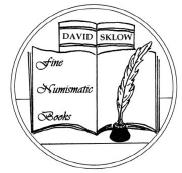 David Sklow - Fine Numismatic Books has closed their 6th auction. Sale highlights include:
David Sklow - Fine Numismatic Books has closed their 6th auction. Sale highlights include: - Lot 133 $800; Du Choul, Guillaume. VETERUM ROMANORUM RELIGIO, CASTRAMETATIO, DISCIPLINA MILITARIS UT BALNEAE: EX ANTIQUIS NUMISMATIBUS & LAPIDIBUS DEMONFTRATA. Amsterdam, 1685:
- Lot 134 $440; Easton, E. {Publisher}. ANTIQUITATES SARISBURIENSES. London, 1771:
- Lot 51 $137; Hendriks, Frederick. DECIMAL COINAGE: A PLAN FOR ITS IMMEDIATE EXTENSION IN ENGLAND, IN CONNECTION WITH THE INTERNATIONAL COINAGE OF FRANCE AND OTHER COUNTRIES. Bucklersbury, England. 1866:
- Lot 324 $825;Mehl's Numismatic Monthly
- Lot 74 $220;Very Rare "Sponsors Edition" of The National Bank Note Issues of 1929-1935 copy #3 of 25
- Lot 172 $350; Kroh, Dennis J. ANCIENT COIN REFERENCE REVIEWS. [SPECIAL HARDBOUND NUMBERED EDITION # 1of 20]
- Lot 332 $285;Mehl, B{enjamin} Max. 1907 WEDDING PHOTO OF B. MAX AND ETHEL.{Fort Worth, TX.}. 14.5 x 22 cm. black and white, professional portrait of B. Max seated, and his wife Ethel, standing at his side
- Lot 374 $3750; Raymond, Wayte and Macallister, J{ames}.G.{cataloguers}. THE NUMISMATIC AUCTION CATALOGUES OF J.C. MORGENTHAU & CO. New York, N.Y. 1932-1945. Adams Sale Numbers One through Fifty-three complete.
- Lot 654 $330; Dye, John S. BANKING HOUSE OF JOHN S. DYE [DELINEATOR LETTER].New York. 1854, 8vo, 27 x 21cm
- Lot 661 $750; Frossard, Ed{ouard}. NUMISMA. [DELUXE EDITION]. Minneapolis, MN. And Rocky River, OH. 1983 reprint of the 1877-1891 original, ten volumes complete. Special limited Edition copy # 4 of 4 produced.
Send inquiries to: David Sklow - Fine Numismatic Books, P. O. Box 6321, Colorado Springs, CO 80934. Telephone: (719)-302-5686; Fax: (719)-302-4933; Email: numismaticbooks@aol.com. The Prices Realized are currently accessible on-line: www.finenumismaticbooks.com I would like to take this opportunity to thank all those who participated, both bidders and consignors!
Consignments are now being accepted for all future sales. Sale #7 is set for June 13th 2009. Consignments include a library of U.S. Copper literature and the personal library of a former numismatic literature dealer with many one-of-a-kind deluxe items.
ADDRESS UPDATE FOR NUMISMATIC LITERATURE DEALER JOHN BURNS
Numismatic literature dealer John Burns reports that he has a new email address: JohnH.Burns@comcast.net The phone number 412-824-2281 remains the same.NEW WEB SITE: NEOCOLLECT.COM
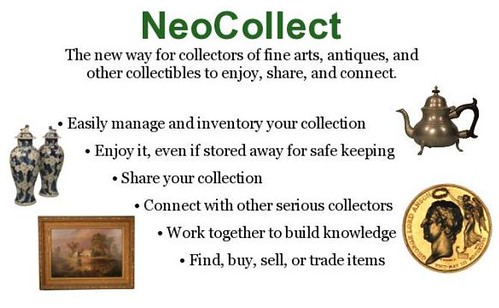
Background – John observed that over the last few years, although the Internet has made it much easier for collectors to buy, sell and research items of special interest, it has not yet helped serious collectors manage and display their collections on the web, or share their knowledge more broadly through the items they have collected. Major museums have adopted sophisticated software to manage and display their collections online, but because it’s extremely expensive and difficult to use, even most museums have not yet placed many of their holdings on the web.
By taking the basic concept behind museum software, simplifying it and providing it online for collectors to use – even those without a lot of computer experience – NeoCollect allows collectors to:
- Easily and inexpensively manage and inventory their collection
- Enjoy their collection, even if it is stored away for safe keeping
- Share their collection with others
- Connect with other serious collectors
- Work together to build knowledge and publish their research
- Find, buy, sell or trade items
NeoCollect represents a major advance beyond home inventory programs and collector registries since it operates completely over the internet, and is highly flexible and very easy to use. Most importantly, it is also extremely private, with every collection and each item completely private and viewable only by the collector until he or she decides to make them public. And even when collectors decide to share parts of their collection with others, they can keep their identity private by displaying only their NeoCollect user name. Or, if the collector prefers, he can provide a brief personal profile and description of his collection.
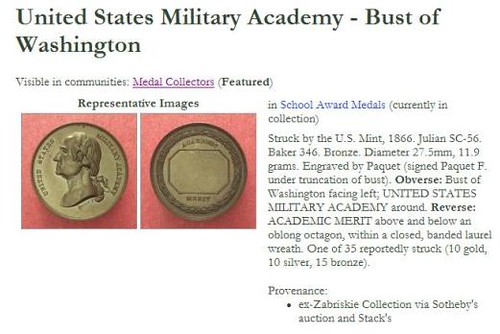
For a brief tour, see the Overview video ( http://www.neocollect.com/help/video/overview/ ) and other visual tours ( http://www.neocollect.com/help/video/overview/#more_videos ) or read the NeoCollect About Us page ( http://www.neocollect.com/help/about/ ).
Major Collections Now on NeoCollect – Selections from a number of major numismatic collections are already on display on NeoCollect. In addition to portions of John Sallay’s own collections ( http://www.neocollect.com/user/johnsallay/), NeoCollect now includes selections from the Kittredge Numismatic Foundation collection of European talers ( http://www.neocollect.com/coll/71/) and nearly 200 extremely significant American medals owned by West Coast collector Alan V. Weinberg ( http://www.neocollect.com/user/alanvweinberg/).
Included from the Weinberg Collection are rarities such as the Morgan L. Mott San Francisco gold nugget medal which came from the Ford Collection, the large-size Jefferson Indian Peace Medal reputed to be Jefferson’s own example, and the hand-engraved silver medal given to the captors of Abraham Lincoln’s assassin, from the Garrett Collection. Other major items represented on NeoCollect include Early American or “Betts” medals from the collections of both Tony Lopez and Skyler Liechty.
NeoCollect allows collectors interested in similar items to connect with each other by joining or starting a NeoCollect community. Community members can link their collections to a community for others to browse. The community’s classified section can even help members build and refine their collections. A Medal Collectors community has already been established on NeoCollect ( http://www.neocollect.com/c/medals/).
Publishing via NeoCollect – Although it is not yet set up, NeoCollect will enable its user collectors to publish at relatively low cost their collections, catalogues, research and other writings directly into physical book form through its partnerships with selected print-on-demand book publishers. This capability is expected to be available within the next few months.
To visit NeoCollect, see: www.neocollect.com
NEW BOOK: THE WHITMAN ENCYCLOPEDIA OF COLONIAL AND EARLY AMERICAN COINS
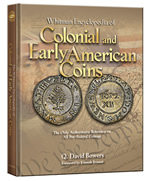 Whitman Publishing is releasing a new, authoritative reference on the coins of British America and the early states. The Whitman Encyclopedia of Colonial and Early American Coins, by Q. David Bowers, will be available in bookstores nationwide in early March 2009. The hardcover edition retails for $49.95, and the Limited Edition (250 copies) for $99.95. The book is 352 pages, 8.5 x 11 inches, and illustrated in full color.
Whitman Publishing is releasing a new, authoritative reference on the coins of British America and the early states. The Whitman Encyclopedia of Colonial and Early American Coins, by Q. David Bowers, will be available in bookstores nationwide in early March 2009. The hardcover edition retails for $49.95, and the Limited Edition (250 copies) for $99.95. The book is 352 pages, 8.5 x 11 inches, and illustrated in full color.Until now, collectors of the coins and tokens of colonial America and the early United States have never had a single, authoritative reference for guidance. Bowers, the “Dean of American Numismatics,” has drawn on the expertise of dozens of specialists from around the country to write a comprehensive book that redefines the genre. The Whitman Encyclopedia of Colonial and Early American Coins explores:
- Collecting, grading, and attributing colonial coins
- Money in early America
- Minting and distribution
- Silver coins of Massachusetts
- Early British coins and tokens for America
- American coins and tokens from 1783 to 1788
- Other early American pieces
- Later European coins and tokens for America
- Early George Washington coins and tokens
- Foreign coins traditionally collected along with colonials
- 19th-century colonial copies and fantasies
Bowers’s engaging text is supported by nearly 2,000 full-color photographs, extensive auction data, market values and commentary, historical price trends, rarities, a selected bibliography, and an index with more than 700 entries.
By Q. David Bowers; foreword by Kenneth Bressett 352 pages, full color Hardcover, 8.5 x 11 inches Illustrated with hundreds of detailed photographs Retail $49.95 (hardcover); $99.95 (Limited Edition)
NEW BOOK: CONFEDERATE DEPOSITORY RECEIPTS AND EXCHANGE CERTIFICATES
The printers of official Confederate treasury notes and bonds could not keep up with demand for new paper money and print bonds to redeem the old paper money. Hence, the Confederate Treasury resorted to certificates of indebtedness or interim receipts. These were used to borrow money temporarily while new issues were substituted for the old paper money or to satisfy claims of those who had bought bonds which the treasury did not have on hand. See below for an example of an IDR issued by the depositary at Selma, Alabama.

IDR issued at Selma, Alabama in 1864 by W. M. Smith, Depositary.
In 1998, two great researchers and collectors of IDRs, Dr. Douglas B. Ball and John Martin (Marty) Davis, began collaborating on a definitive reference and history of these interesting documents. Unfortunately, Dr. Ball’s untimely death in 2003 ended this partnership. Subsequently, Pierre Fricke acquired Dr. Ball’s work, and more recently, Marty Davis approached George Tremmel to help author a book based on his earlier research. Tremmel contacted Fricke in late summer 2008 and the old collaboration was resumed.
In 2010, the authors plan to publish, a history and catalog of IDRs and exchange certificates originating in all eleven Confederate states. Several publishing options are being explored. The book will be modeled after recent award winning Confederate currency books by both Fricke and Tremmel. It will be portable, in full color and affordably priced. Its contents include an historical narrative and an illustrated catalog with rarities and pricing.
Several major collectors are helping already and we encourage others willing to contribute information and scans to contact us, please.
NEW BOOK: THE DEVIL'S WORKSHOP: A MEMOIR OF THE NAZI COUNTERFEITING OPERATION
 Last year we discussed a few books on the fascinating topic of Operation Bernhard, the WWII Nazi counterfeiting operation, including Krueger's Men: The Secret Nazi Counterfeit Plot and the Prisoners of Block 19 by Lawrence Malkin.
Last year we discussed a few books on the fascinating topic of Operation Bernhard, the WWII Nazi counterfeiting operation, including Krueger's Men: The Secret Nazi Counterfeit Plot and the Prisoners of Block 19 by Lawrence Malkin. Well, 2009 will bring another book on the topic. This one is authored by Adolf Burger, one of the concentration camp prisoners forced to work on the project. Burger served as a consultant for last year's Oscar winning film, 'The Counterfeiters'. I have no more information on the book, but Amazon.com is taking preorders
THREE MORE NUMISMATIC TITLES ADDED TO STELLA WEB SITE
- The Complete Guide to Mercury Dimes, Second Edition by David Lange published in 2005
- The Complete Guide to Walking Liberty Half Dollars by Bruce Fox published in 1993
- The Complete Guide to Franklin Half Dollars by Rick Tomaska published in 2002
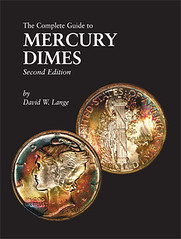
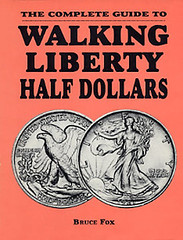
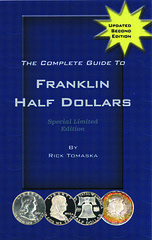
Along with the books, you will find an informative guide Determining Die Doubling from Other Forms of Doubling by J. T. Stanton, NLG was published in 2004. These titles offer an in‐depth analysis and die variety study on each series. A major benefit to having these books online is users can comment on all aspects of the book with updated information, and the authors themselves can augment data over time.
To visit the Stella web site, see: StellaCoinNews.com
SURVEY: THE COIN COLLECTOR'S JOURNAL
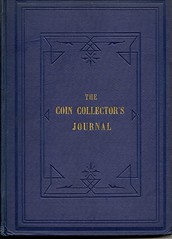 We all know that Wayte Raymond CCJ issues from the 1950's are common right? The first 4 years are common in publishers cloth and the others are scarce but not rare and not particularly valuable, right?
We all know that Wayte Raymond CCJ issues from the 1950's are common right? The first 4 years are common in publishers cloth and the others are scarce but not rare and not particularly valuable, right?We all know that all the Scott's CCJs from the 1870’s and 1880's are equally scarce, Volumes 1-4 are fairly common, Volumes 5-12 are all equally scarce and the only rare one is Volume 13, right?
Help us figure this out. We are collecting population data on bound volumes and loose issues for both series of Coin Collector’s Journals, the Frossard-edited Scott’s volumes from the 1870’s and 1880’s and the Wayte Raymond versions from the 1930’s-1950’s.
We plan to publish headlines in The E-Sylum and articles in the Asylum. Please help us as much as possible at least with bound volumes, also let us know if you know of hoards, have any data on print runs or anything else that might be interesting. We will not release any information on individuals or their collections, but hope to provide statistical analysis of scarcity or rarity of volumes and issues.
We are sending out data sheets in Excel format and use that if you can, but please send your data any way that's easy for you.
To access the survey form on the NBS web site, see: Coin Collector Journal Survey (http://www.coinbooks.org/ccjlog.html)
I also have an extra copy of Volume 1 from the library of George W. Rode of Pittsburgh (early ANA officer). The 1934-1954 Wayte Raymond series is bound in blue cloth in nine separate volumes. -Editor
THE BOOK BAZARRE
MORE ON A GUIDE BOOK OF SOUTHERN STATES CURRENCY BY HUGH SHULL
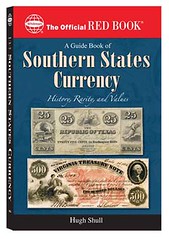 Alan V. Weinberg writes
Alan V. Weinberg writes We have had quite a number of great new publications recently, but few products are perfect and most could be improved upon in ways large and small. While a Crosby can stand 150 years without an update, it's not uncommon for a numismatic book to be updated in a subsequent edition within a few years.
Although many of Duke's points (such as his discussion of the Criswell numbering system) are well taken, his most strident criticism was misdirected. Although it is true that many Virginia notes are not covered in the Shull book, the authors clearly state that these are beyond the book's intended scope. -Editor
Wendell Wolka writes:
Dennis Tucker of Whitman Publishing adds:
(Some new varieties have been discovered in recent months, since the book was published; these will be included in the 2nd edition.)
Private paper money, merchant scrip, city-issued notes, and the like are outside the scope of the Guide Book of Southern States Currency.
If you know of any notes that were issued by the commonwealth of Virginia and were NOT included in the book, please let me know. We would be happy to credit you in the 2nd edition's list of contributors.
QUERY: 1863 $3 AND $4 STATE OF GEORGIA TREASURY NOTES SOUGHT
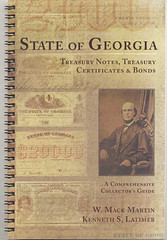 Ken Latimer and I did a self published book in 2005 entitled State of Georgia Treasury Notes, Certificates and Bonds. It is a comprehensive collectors’ guide to all the currency issued by the State of Georgia during the Civil War. The 95-page reference was produced in color on high-grade paper and contains a great deal of research material not available in any other publication.
Ken Latimer and I did a self published book in 2005 entitled State of Georgia Treasury Notes, Certificates and Bonds. It is a comprehensive collectors’ guide to all the currency issued by the State of Georgia during the Civil War. The 95-page reference was produced in color on high-grade paper and contains a great deal of research material not available in any other publication. All the individuals who signed the notes are identified, and there is a wealth of information and on vignettes, rarity, and counterfeit notes. There is even a section on a number of notes that were overprinted and converted to advertising notes long after the war. Of particular value is detailed information and illustrations for more than 50 error notes, which have become quite popular.
The size of the book is 9"x6" with a double loop spiral binding which was used to make the book strong, easy to carry and use at a convention. In the Currency Of Georgia section of Q. David Bowers' book Obsolete Paper Money this book was used as a reference to the State of Georgia Treasury Notes, Certificates and Bonds. We have a small quantity of the books still available for sale and can provide them to E-Sylum readers for $25 each, which includes shipping. E
Even after a lifetime of research and study, we are still discovering new information about this fascinating and intriguing topic. With the help of several dealers, we have been tracking the serial numbers for the large denomination treasury certificates and the rare 1863 $3 and $4 notes for many years. In the book, we listed the serial numbers for 17 known $3 notes and 16 known $4 notes, as well as numbers for the known $5,000, $10,000, and $20,000 treasury certificates, all of which are extremely rare.
After the book was released, we have added three more $3 notes and two additional $4 notes. We would appreciate the help of any member that has or knows of any other 1863 $3 or $4 notes, and ask that you please send us a scan of the note, or at least the serial number. We will be happy to share the list of serial numbers with anyone interested.
QUERY: AN OFTEN-SEEN COIN TONING EFFECT
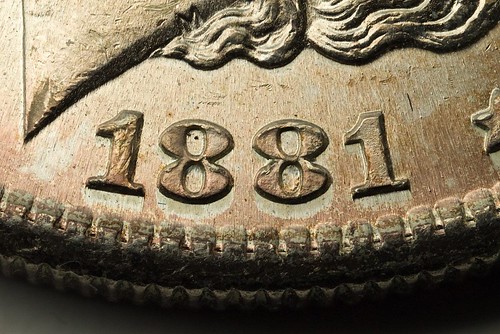
In our discussion, we have attempted to reason and research the cause. We believe that the metal is forced into and out of the devices. This force impacts or deforms the metal. In the center devices such as the portrait the effect is less and therefore the coin tones normally. As you get closer to the collar there is more stress as the metal is forced from the date, legend or star bending toward and rebuffed by the collar.
We hypothesize this stress either changes or deforms the crystalline structure of the metal and perhaps hardening it at just that point adjacent to the devices closest to the collar.
We have seen this effect on thousands of coins. We were hoping that one of your readers may be an accomplished metallurgist and can definitively explain the effect that leads to this lack of toning.
ASSAY MEDAL BOOK BOUND BY AUTHOR, NOT TAMS
Last week we discussed binder's errors on numismatic books, including Medals of the United States Assay Commission 1860-1977 by R. W. Julian & Ernest E. Keusch.Token and Medal Society Journal editor David E. Schenkman writes:
MORE ON NUMISMATIC LITERATURE INVENTORY SOFTWARE
Ray Williams writes:Richard Giles writes:
In terms of customization, it required nothing. They cover everything from book look-up including support for bar code reader input. It can look books up using a extensive source list (Amazon, Barnes and Noble, Libraries, etc). It can literally track anything you can think of including price, condition, storing your own book images. Using a spreadsheet is like living in the dark ages for me. Anyone with a serious collection should look into this.
And no, I don't work for the company but I do work in the commercial software sector so I appreciate well written software.
The site has a feature where users can search for book titles in a large database, then add titles to their own listing with the click of a button. I tried this using the prolific Dave Bowers as an example. The system found 47 titles from 1966 through 2008.
That's a great way to jumpstart library listing, but the database is far from complete for the subject of numismatics. The tool allows users to add their own titles manually to fill in the blanks. That's more work of course, but the jumpstart gives you a big leg up. Again, with Collectorz this works mainly with recently published works having an ISBN number. -Editor
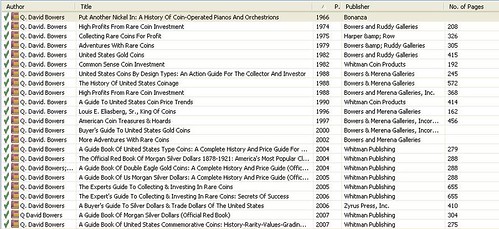
ST. LOUIS COIN DEALER BURDETTE G. JOHNSON
Regarding Richard Margolis' request for more information on St. Louis coin dealer B. G. Johnson, Pete Smith writes:I located the following bio on the CoinLink site:
Just over a year later, Johnson bought out his partner. Johnson conducted 36 auction sales from 1902 to 1915. He was a mentor of Eric Newman, and these two purchased all five 1913 Liberty Nickels from the Colonel Green estate in 1942. Johnson received numerous large consignments from Armin Brand, representing coins from the Virgil Brand estate.
To read the original article, see: www.coinlink.com/Resources/category/biographies/dealers/
An article about Eric Newman by Robert Hoge on the American Numismatic Society web site has this story:
Eric recalls that Johnson "had an absolutely spectacular memory; he had absorbed a total 20-volume history of the world... I remember his saying to me one day, 'Eric, I won't sell you this coin because you don't know anything about it. But here's a book... You take it home and read it, and then tell me what you learn.' I did, and he became my very close friend and mentor. I bought many coins from him, American large cents, colonials, and in due course we purchased most of the Col. Edward H. R. Green collection together."
To read the complete article, see: Eric P. Newman: A Collector Profile (http://ansmagazine.com/summer03/newman.html)
MINT RECORDS DESTROYED BY STELLA HACKEL, NOT MARY BROOKS
Last week Bruce W. Smith wrote:Dave Lange writes:
One E-Sylum reader adds:
Mike Ellis adds:
THE BOOK BAZARRE
A FEW INTERESTING ITEMS IN OUR MARCH 5, 2009 AUCTION SALE
• THE MINT, BIRMINGHAM, 1904. With Superb Illustrations of Coins & Medals
• The Quarterman PENNY WHIMSY, Signed by SHELDON, PASCHAL & BREEN
• Framed 18th Century Engravings of MARTIN FOLKES & REV. SOUTHGATE
• A 1799 Act of Parliament Enabling Matthew Boulton to ERECT A MINT IN RUSSIA
Catalogue accessible at: www.numislit.com
GFK@numislit.com GEORGE FREDERICK KOLBE (909) 338-6527
THE 1992 MYSTERY OF THE COUNTERFEIT CHRYSANTHEMUMS
An alert E-Sylum reader pointed out that the New York Times article about Japanese chrysanthemum gold coins referenced recently was not a new story - it was actually from May 20, 1992.Sorry I managed to miss that - somehow it turned up in one of my searches of recent newspaper articles, and I didn't notice the publication date. So, does anyone know how the story turned out? Were the coins returned to dealer Paul Davies? Or were they declared counterfeit and confiscated?
To read the earlier E-Sylum article, see THE MYSTERY OF THE COUNTERFEIT CHRYSANTHEMUMS (www.coinbooks.org/esylum_v12n06a25.html)
STICKERED OBAMA QUARTERS NOT A PRODUCT OF NATIONAL COLLECTOR'S MINT
Armen Vartian writes: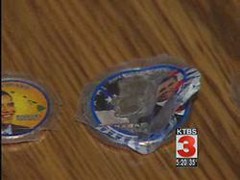
Both the coins and the coin album displayed in the TV piece are distinctive and clearly from that company, not NCM. The woman had bought another -- non-Obama -- coin from NCM and asked for a refund, which she got before the TV piece even aired.
The TV station is investigating how the story got so mixed up, but you should take the link to the TV report off your site and run a supplemental piece explaining the situation to your readers so you don't cause NCM any more harm than it has already suffered because of all this. -Editor
It's a shame the reporter got the story wrong - this is something another reader lamented in last week's issue. They work on tight deadlines and probably just took the woman's word for the source of the coins rather than fact-checking it. -Editor
QUERY: INFORMATION ON CHARLOTTE MINT BOOK AUTHOR STAUTZENBERGER SOUGHT
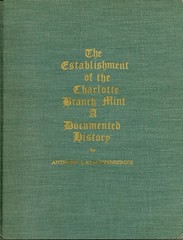 Dave Ginsburg writes:
Dave Ginsburg writes: MORE ON THE KANSAS POCKET GOPHER SCRIP NOTE
Last week I quoted a Numismatic News article on a Kansas scrip note. Jim Downey writes:
MORE ON NEWSPAPER ARCHIVE WEB SITES
Commenting on last week's Featured Web Site, Jim Downey writes:Russ Sears writes:
THE BOOK BAZARRE
QUERY: DID THE U.S. MINT STRIKE A GOLD MEDAL FOR MAGICIAN HERR ALEXANDER?
This man was famous on both sides of the Atlantic, being feted by kings and hobnobbing with presidents while Lincoln, as-yet-unelected, split fence rails and Darwin, as-yet-unpublished, went bird watching, comparing the odd bug in worldly obscurity, and Mendelssohn had already passed away. Let me first tell you how this eminent fellow unexpectedly sprang to mind.
Going deep through the drawers of his father-in-law’s desk, sealed since perhaps 1939, a friend discovered both a kid leather souvenir billfold and coin wallet. Each held three items. The billfold held two $5 promissory notes from Augusta Georgia, dated October 1861 and an 1899 Philippines five peso note issued during the short span of Philippine independence from Spanish and American rule. A relative had served in the Spanish America War and collected remembrances we surmise.
 In the wallet we discovered a 1925 Stone Mountain half dollar, green from long contact with leather, a well toned 1893 World’s Columbian Exposition half dollar, and a rare and unfamiliar, lightly gilded bronze medal about the size of an eagle but thick as two large cents.
In the wallet we discovered a 1925 Stone Mountain half dollar, green from long contact with leather, a well toned 1893 World’s Columbian Exposition half dollar, and a rare and unfamiliar, lightly gilded bronze medal about the size of an eagle but thick as two large cents. The medal boasts a handsome portrait on one side and on the reverse the following inscription: “Presented to Herr Alexander as a token of esteem by his friends. New York. 1847.”
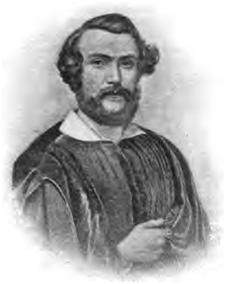 Herr Alexander, eminent conjuror, was as famous as General Tom Thumb by 1847. Alexander Heimbürger was born in Germany in 1809. He toured Europe to acclaim and began working the North American magic circuit, still a young man.
Herr Alexander, eminent conjuror, was as famous as General Tom Thumb by 1847. Alexander Heimbürger was born in Germany in 1809. He toured Europe to acclaim and began working the North American magic circuit, still a young man. Herr Alexander’s act was “boffo” at President Polk’s White House fooling the likes of Henry Clay and Daniel Webster. With President Polk’s letters of diplomatic assistance, Herr Alexander went on extended tour in South America playing the “Palace,” in 1850, not a theater, but the royal palace of Pedro II in Brazil.
From Carus, Paul - The Open Court, Volume XIX, 1905, Open Court Publishing Company, Chicago, P.355., from The Harry Houdini Collection – Library of Congress, via Google Books
The bronze medal found by my friend may have been a contemporary, less noble, once gilded copy, probably sold at a premium among the magician’s friends to finance die sinking and to offset the cost of the ten dollar, solid gold version of the medal presented to Herr Alexander himself.
In 1903 Harry Houdini was delighted to discover the old and esteemed magician of last century; Herr Alexander still lived in retirement in Münster, Germany, with a daughter living in New York. Harry Houdini sought out Herr Alexander to talk tricks of the conjurors trade and hear stories of his astounding magic capers before royal audiences a half century ago. Herr Alexander recollected during his New York engagement, he helped out one “Orzini” an illusionist with a magic cabinet act.
As an entertainer Orzini bombed with audiences at the New York Park Theater. Herr Alexander was amazed to discover the same Orzini eventually became famous but not for illusions. He bombed for the last time, blowing himself up in Paris during a bungled assassination attempt at the carriage side of Emperor Napoleon III, who escaped dazed but unharmed. Orzini had only just arrived in Paris from America and in his effects the gendarmerie found his illusionist’s magic cabinet and many unanswered questions.
So here's my question for the E-Sylum readership: The United States Mint provides coinage to meet the needs of commerce, prepares medals for war heroes distinguished by act of Congress, and satisfies official diplomatic requests such as fabrication of dollars for presentation to Siam in 1834 (using old dies of 1804, since those were all that came to hand), but how do we account for the United States officially striking a gold medal for an entertainer?
Was this official, or was it an amazing feat of Herr Alexander, mesmerizing President Polk’s White House into doing him a singular honor? What other entertainers of any stripe during the early 19th century were so recognized by U.S. Mint gold medals? Is Herr Alexander’s medal evidence of a golden age of moonlighting by diesinkers at the Department of the Mint in Washington to make a little on the side, fabricating less-than-official products to satisfy private interests? I’m sure even the great Harry Houdini was amazed and had much to learn from his elder, Herr Alexander whose magic lives on to surprise us out of unexpected quarters.
- Personal Medals
- School Medals
- Marksmanship Medals
- Religious and Fraternal Medals
The Personal Medals chapter includes medals honoring Louis Agassiz, Robert and Louisa Gilmore, Dr. David Hosack. One medal in the Unclassified chapter may actually be the first one struck at the Mint - J. Rickett's Circus, circa 1840.
I was unable to locate a listing for a Herr Alexander medal. However, the author indicates that Mint records prior to 1855 are sketchy at best, and a definitive list may be an unobtainable goal.
This reference to a gold medal struck for Herr Alexander in the late 1840s could pave the way for future research. Is anyone aware of the whereabouts of this medal, or any prior research linking its striking to the U.S. Mint? -Editor
Luckily, Bob Julian is an E-Sylum reader. I asked him about the medal and he writes:
QUERY: SPANISH CIVIL WAR BANKNOTE BOOK SOUGHT
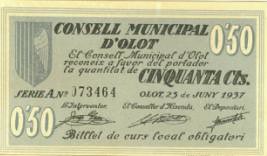

MORE ON THE DEBATE FOR AND AGAINST NUMISMATIC MUSEUMS
It is one thing for a museum to be adequately staffed, have a rotating exhibit of fine collections, permitting easy access to their holdings to serious collectors, photographers, and researchers - not the man off the street (with the necessary supervision - I recall the ANS debacles involving Sheldon with large cents and years later Suros with ancient coins), and finally, a fine web site where photographic access can be had to their holdings.
Unfortunately, I do not know of a single numismatic institution that provides all this. They simply don't have the personnel, the money or the inclination. Unless the donor of his/her collection can financially support and assure such museum services into perpetuity, I support the public auction of fine collections where, for instance, a fine catalogue by Stack's documents historically and photographically a collector's lifetime numismatic pursuits. I'll be darned if my collection of some 50+ years will end up in a museum. I'll never forget the 1966 Washington D.C. Congressional sub-committee hearings involving the "gift" of the Josiah K. Lilly gold collection to the Smithsonian in exchange for a $5.5 million estate tax credit on the Lilly estate (a lot of $ in those days). In effect the American public was purchasing the collection for $5.5 million dollars.
Kosoff, Stack, Clain-Stefanelli and the two supporting Indiana senators including Birch Bayh testified everything in the collection was genuine. And Clain-Stefanelli swore under oath that any duplication in the Lilly / Smithsonian holdings would be auctioned. Well, many of the gold coins and ingots in the Lilly collection were modern-made forgeries or items of high suspicion to the point where ultimately the Smithsonian took down the entire Lilly exhibit years ago.
My letter of inquiry on the non-disposal of duplicates resulted in the Smithsonian Secretary (the Head Curator in charge, as it were) responding in writing that, in fact, the Smithsonian required THREE examples of every coin or ingot, to exhibit obverse and reverse and a third to loan out to other institutions. An obverse and reverse of a 1933 double eagle, indeed!
So much for Clain-Stefanelli's sworn oath. Had Congress known at the time that the Smithsonian required three of anything numismatic, surpassing the biblical Noah, and that so much of the Lilly Collection was fake, I have little doubt that collection would not have gone into what is today a federal government "lockup".
TRAIN ROBBER SNATCHES SACKS OF NEW 1909 CENTS
Chick Ambrass writes: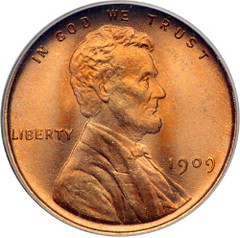 Just east of Lewistown, PA on Route 322 there is an area called the "narrows", a five to six mile stretch where the mountainsides on both sides of the Juniata river are extremely steep. The highway is on the northern side of the river, and the railroad tracks are on the southern side.
Just east of Lewistown, PA on Route 322 there is an area called the "narrows", a five to six mile stretch where the mountainsides on both sides of the Juniata river are extremely steep. The highway is on the northern side of the river, and the railroad tracks are on the southern side.In 1909 there was a train traveling to Pittsburgh and beyond with a shipment of coins from the Philadelphia mint. In the middle of the "narrows" the train was stopped by a single man who had dynamite on the tracks. He robbed the train of several sacks of coins and disappeared up the mountainside. After an inventory was taken, it was realized that the only thing that was missing were several sacks of one cent coins!
I located the following online account of the Great Cent Robbery:
As the train reached the Lewistown Narrows, about nine miles east of Lewistown Junction, Engineer Samuel Donnelly of Harrisburg was surprised by a series of sharp explosions beneath the engine. The engine had passed over three sticks of dynamite, which blew off the cowcatcher and headlight.
After he slammed on the brakes, a masked man armed with two revolvers leaped up the steps into the cab.
The train was carrying three large safes containing an undisclosed amount of currency and five bags holding about $6,000 in gold and silver bars, and money was stacked in a corner.
The robber threatened the crew and fired several shots at the conductor, Isaac Poffenberger, wounding his hand. The robber then ordered the crew to carry several large bags of coins into the woods, had them re-board the train and fired several shots as the train pulled away.
When investigators arrived at the scene, they found the bags still in the woods. The robber had passed up the gold and silver bars and snatched bags containing newly minted pennies.
Police suspected James Lawler, who had been arrested in a 1903 post office robbery in Centre County, of being the masked bandit. Lawler had been in the area for three days talking to railroad employees.
Lawler was never found.
Apparently the investigators overlooked some bags. Chick continues:
To read the complete article, see: Pennsylvania's Jesse James (http://www.pennlive.com/news/patriotnews/stories/150murders.html)
EDITORIAL BACKLASH AGAINST THE U.S. CENT CONTINUES
It seems the weather prevented distribution of a quantity of the coins in Kentucky, the first state to be featured in the four-start reverses honoring Lincoln's state homesites. For the rest of the country, few banks have the Kentucky-reverse cents on hand. Reason: the pipeline is too full of cents. The Mint delivered the cents to the Federal Reserve but banks, apparently of all sizes, did not place orders for the new cents.
Is there a bank backlash from the overabundance of State quarter issues and Westward Journey nickel issues? With four more fresh coins -- cents this time -- was it more than what the banks wanted to handle?
What did surface was a lot of editorial ink requesting the retirement of the cent. Consensus of editorial writers during the week of the first new Lincoln Cent reverse introduced on Lincoln's birthday seemed to be: "That's nice, now get rid of the cents!"
An Orlando Florida Sentinel editorial said it best:
The government and U.S. Mint no doubt found the idea irresistible to issue four new versions of the penny this year to commemorate the 200th anniversary of the 16th president's birth, and the 100 years since Lincoln's image first graced the 1-cent piece in 1909. But the government next should look to retire it, and the sooner the better.
To read the complete article, see: We think: With apologies to Lincoln, it's time to retire the penny (www.orlandosentinel.com/news/opinion/orl-ed20209feb20,0,2111959.story)
HOW COINS, BANKNOTES AND CHEQUES ARE BEING REPLACED BY ELECTRONIC MEDIA
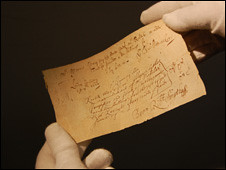 The cheque, which is 350 years old on 16 February, is said to be in irreversible decline as innovation points towards a cashless society.
The cheque, which is 350 years old on 16 February, is said to be in irreversible decline as innovation points towards a cashless society. Banks will increasingly battle for a consumer to use one card exclusively.
But Andrew Bailey, chief cashier at the Bank of England, told the BBC that notes and pennies would still survive the test of time.
"I do not see the banknote dying out in the next ten years. It is not just me saying that because I sign them; there is a demand that I can't see going away," said Mr Bailey, whose signature is on every banknote.
The future of the chequebook is far less secure, with numerous retailers refusing to accept them and consumers increasingly turning to electronic payments instead.
"Those aged in their 20s don't know what a chequebook is, and those in their 30s don't know where their chequebook is," said Sandra Quinn of Apacs.
The earliest cheque in the UK was thought to have been written 350 years ago, dated 16 February. It was made out for £400, signed by Nicholas Vanacker, made payable to a Mr Delboe, and drawn on Messrs Morris and Clayton - scriveners and bankers of the City of London.
The cheque's predecessor was the bill of exchange - a way for traders to buy and sell goods without the need to carry cumbersome and valuable quantities of gold and silver.
To read the complete article, see: Dying cheques mark changing times (http://news.bbc.co.uk/2/hi/business/7850945.stm)
BANKNOTE PRINTER TO PRINT NEW SOLAR CELLS ON POLYMER
VICOSC’s 3-year $A12 million project is at its halfway point, with trials six months ahead of schedule. Members of VICOSC include researchers from CSIRO Future Manufacturing Flagship, University of Melbourne, Monash University.
To read the original article, see: New Solar Cells Will be Printed Like Money (cleantechnica.com/2009/02/20/new-solar-cells
-will-be-printed-like-money/)
THAT HUGE SUCKING SOUND IS CASH FROM TOURIST POCKETS
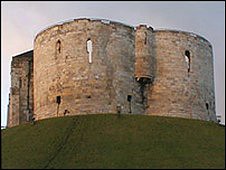 About £1,500-worth of coins dropped by visitors at an ancient well have been collected by a huge vacuum pump.
About £1,500-worth of coins dropped by visitors at an ancient well have been collected by a huge vacuum pump. Hundreds of visitors are thought to put money down the the 50ft (15.24m) well at Clifford's Tower in York every year as they make a wish.
On Wednesday, a huge vacuum pump was used to clear the drains. The coins were then jetwashed before being counted by English Heritage.
Claire Hogan, the tower's operations manager, said: "We last emptied the well in May 2006, although it took us nearly two years to clean, sort and count the £1,000-worth of small change in there that had accumulated over 10 years, so we have made a conscious decision to empty the well more often.
"We tried to think of different ways of making the job easier, including putting a net at the bottom of the well that we could hoist up, and indeed, one of the wildest ideas was to somehow suck the coins up in a giant vacuum clear."
The device used is a new design by Huddersfield company Eurovac, who offered to collect the coins so they could test out the machine.
To read the complete article, see: Vacuum collects tower well cash (news.bbc.co.uk/2/hi/uk_news/england/north_yorkshire/7895929.stm)
SHADES OF ALVES REIS: NIGERIAN SCAMMER'S $27 MILLION SWINDLE
I was reminded of this story by a report this week of a similarly audacious scheme by a Nigerian scammer accused of posing as the central bank of Ethiopia and bilking Citibank out of $27 million. -Editor
To read the complete article, see: 419 scammer impersonates the nation of Ethiopia, takes $27 million from Citibank (www.boingboing.net/2009/02/20/419-scammer-imperson.html)
FEATURED WEB SITE: THE GREEK COIN PAGES
This week's Featured Web Site is Bill Daehn's Greek Coin Pages. The site was profiled this week by Ed Snible in his blog A Gift For Polydektes. To read his complete original blog post, see: Bill Daehn's web site.Ed writes:
If reading Daehn's essay makes you interested in Pinkerton's book both volume 1 and volume 2 can be viewed and downloaded from Google Books.
If you believe, as Daehn does, “When holding and reading an original edition, the collector feels a closer connection to the time and place in which the book was written. In comparison, the reprint feels ‘too modern,’ and part of that all-important connection is lost” you'll be happy to know that sellers on AbeBooks.com are offering Pinkerton two-volume sets, both 1st editions and the 1808 reprint, at prices ranging from $37 to $316.
http://home.comcast.net/~wdaehn/
